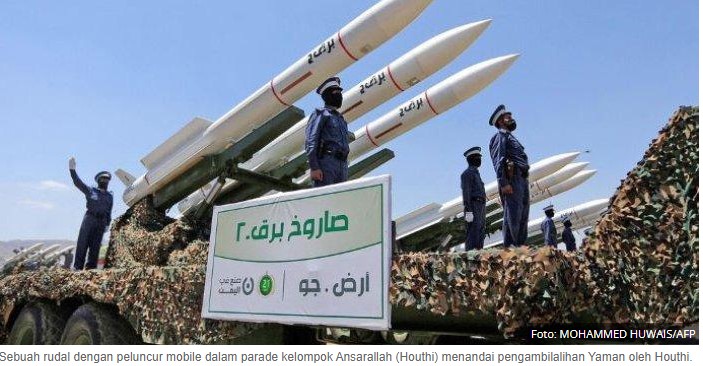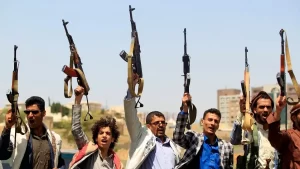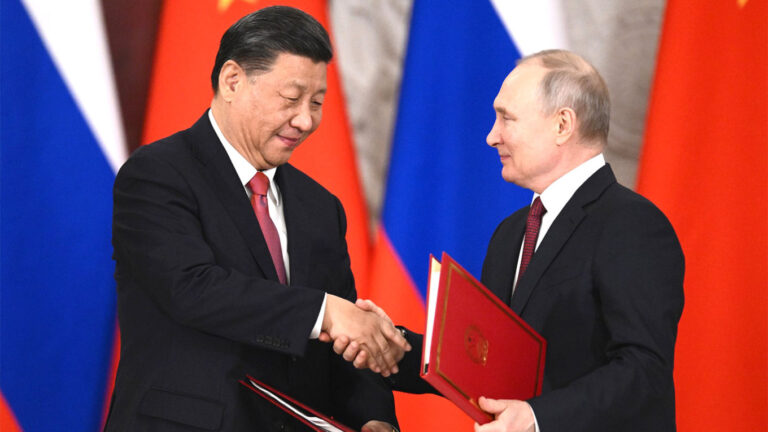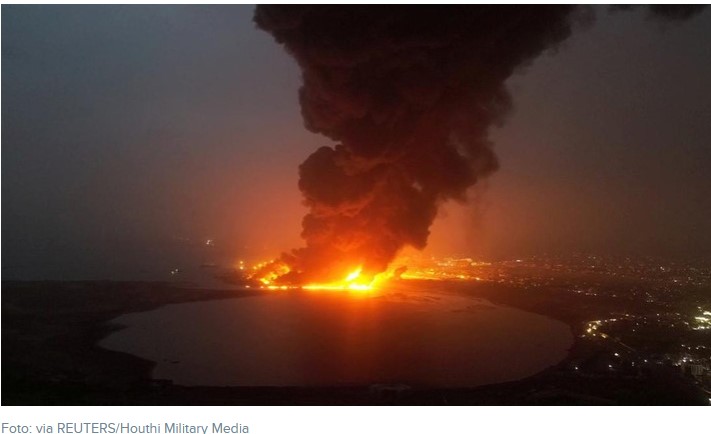
Houthi's missile
STRATEGIC ASSESSMENT. U.S. and international officials, evaluating an expansion of mediation efforts and direct talks between the conflict parties and their outside backers, express cautious optimism that an eight-month truce during 2022 can be formally reinstated, paving the way for a possible political solution to the conflict in Yemen. Some experts assess the Yemen war as having greater potential for resolution in 2023 than the domestic split in Libya, or the long-running civil war in Syria. The sense that the contending parties might be negotiating in earnest stems from direct talks between the Iran-backed Houthi movement and Saudi officials, the main supporters of the Yemen government, facilitated by the Sultanate of Oman. The talks are being conducted in parallel with the UN-led effort to restore the formal truce, which has largely held informally since expiring in October. According to a February 25 report in the Economist, the Saudis “are negotiating a deal that would allow them to withdraw,” which could be signed around Ramadan, the fasting season which begins in late March. The press report reinforced comments to Saudi journalists several days earlier by Rashad al-Alimi, the head of the Yemen government’s Presidential Leadership Council, the country’s highest decision-making body, praising the latest talks between Riyadh and the Houthis.

The Kingdom’s leaders – in particular Saudi Crown Prince Mohammad bin Salman, the architect of the Saudi-led military campaigns against the Houthis – appear more open to a settlement on terms that they previously considered unacceptable, including ceding a dominant role in a new Yemen government to the Houthis. Saudi leaders and their main partners, the United Arab Emirates (UAE), previously demanded that Houthi leaders have no more than a symbolic role in a postwar government. In exchange, the Saudis and Emiratis would see an end to Houthi attacks on the Kingdom and on the UAE using Iran-supplied drones and short-range ballistic missiles.
The reports of progress at the negotiating table have been mirrored by additional pledges and delivery of aid and goods to the Yemeni people on both sides of the frontlines. In late February, Saudi Arabia deposited a $1 billion grant into the country’s central bank to help the overall Yemeni economy, augmenting funds raised during a recent UN-led conference. Coinciding with that grant, the Kingdom, in partnership with the United Nations, eased restrictions on deliveries through the Houthi-controlled port of Hodeidah to allow a container ship carrying general commercial goods to dock there for the first time since at least 2016. Goods arriving at Hodeidah have to be vetted by a UN body (UN Verification and Inspection Mechanism for Yemen, UNVIM) established to prevent arms shipments from entering Yemen, and Djibouti-based UNVIM has previously given approval only to ships carrying humanitarian goods like foodstuffs, fuel and cooking oil. A Republic of Yemen government official told journalists that the expanded access to Hodeidah represented a confidence-building step aimed at supporting the Saudi-Houthi talks to reinstate the truce.

The commercial goods delivery to Hodeidah was intended, in part, to build momentum going into the February 27, UN-hosted “Yemen Conference 2023.” The meeting was popularly known as a high-level “pledging conference,” although the political and social issues facing Yemen as a result of the conflict were discussed at the meeting as well. At the event, Under-Secretary-General (USG) for Humanitarian Affairs and Emergency Relief Coordinator, Martin Griffiths presented an optimistic picture for diplomacy by indicating that the 2022 truce, although technically expired, was “continuing to obtain the decrease in military operations” and was increasing the health of the people of Yemen. However, the conference disappointed many international diplomats because it raised only about $1.2 billion in donations – a substantial amount but far short of the $4.3 billion aid plan for Yemen for 2023. Yemen remains one of the world’s most extensive humanitarian disasters. Erin Hutchinson, the Norwegian Refugee Council’s Yemen Country Director, strongly criticized the pledge shortfall, saying: “This is woefully inadequate and gives the signal that some humans are less valuable than others.” At the conference, the UN High Commissioner for Refugees (UNHCR) said it had received just eight percent of the $320 million it requires for its work in Yemen in 2023.
The UN’s World Food Program (WFP) said that, over the past year, the number of people living in famine-like conditionsfell from 161,000 to zero, but warned that gains could be reversed due to “donor fatigue” – a term currently describing the focus of humanitarian aid donations on the Ukraine war to the detriment of longer-standing crises. Adding the United States’ weight to the conference, Secretary of State Antony Blinken attended and announced a U.S. pledge of more than $444 million in additional aid to Yemen to help it cope with what he called “the world’s worst humanitarian crisis.”
Despite these positive steps, Tehran’s continued provision of lethal aid to the Houthis remains a cause for concern. In recent weeks, U.S., British, and French naval forces – which enforce the UN weapons embargo with regional partners in the Gulf – have separately intercepted several weapons shipments bound for Yemen. On March 2, the Royal Navy said it had seized anti-tank missiles and ballistic missile parts during a raid on a small boat travelling from Iran towards Yemen, the latest such seizure in the Gulf of Oman. The shipments suggest that Iranian leaders want to ensure the Houthis have the military wherewithal to combat Saudi-backed Yemeni forces should progress at the bargaining table stall. Although Tehran has backed de-escalatory steps in Yemen, it remains distrustful of Saudi and Gulf leaders and is fully committed to protecting its regional allies (TSC)





